AWS DynamoDB is a good persistence solution for a specific solution. However, it’s not for a growing and changing application that could need new indexes and queries for its ever expanding features at any time. At this moment it is where the flexibility and speed of a relational database really shined through.
Now, a DynamoDB table with Consumers Preferences data urgently needs to update:
- RENAME one EXISTING attribute
- ADD a new attribute
- SET a value in the new attribute for ALL EXISTING items in DynamoDB’s new table
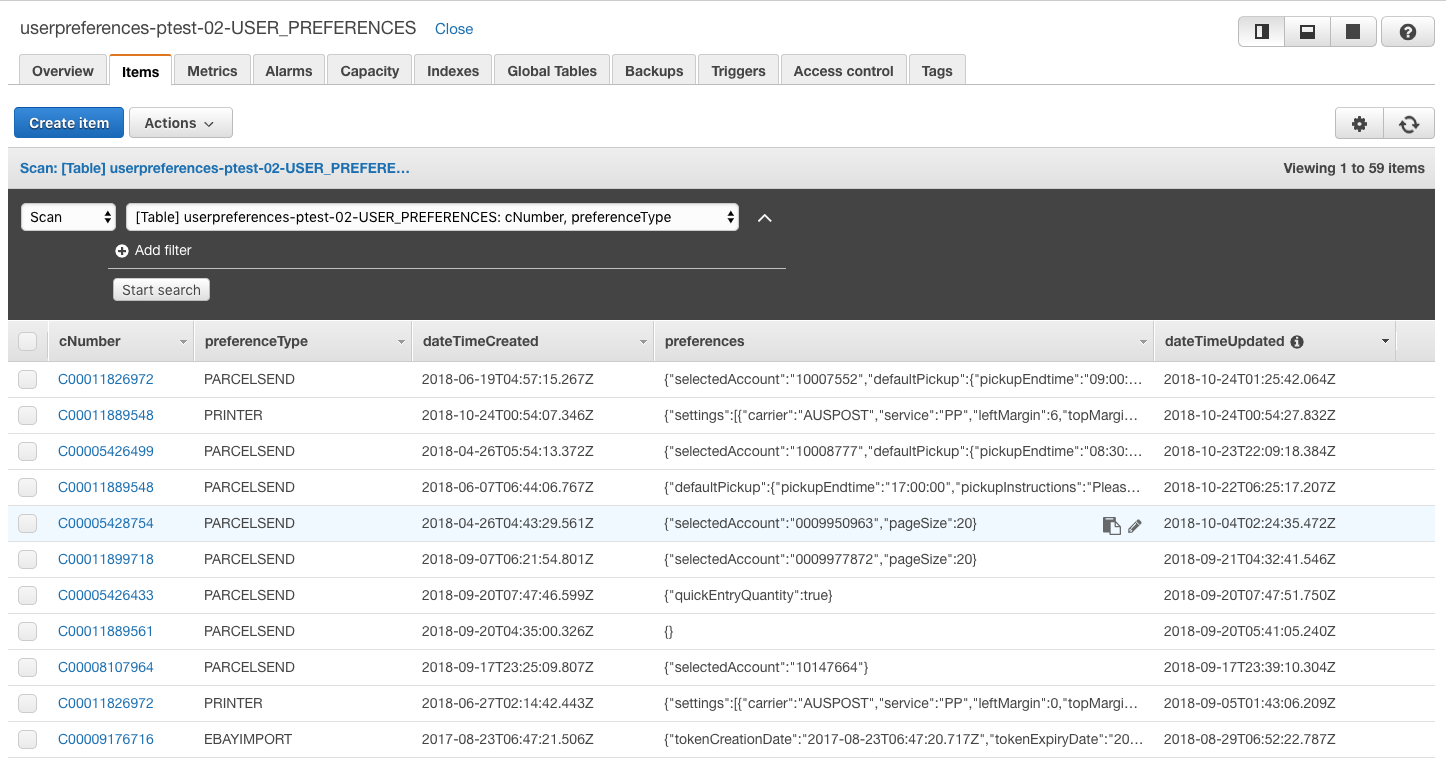
AWS lambda function plays handy here to migrate data, and sync newly inserted, modified / updated, deleted items between existing and new DynamoDB tables.
- Create new DynamoDB table
1 | aws dynamodb create-table \ |
Migrate Data
- Create Migrate Data Lambda function
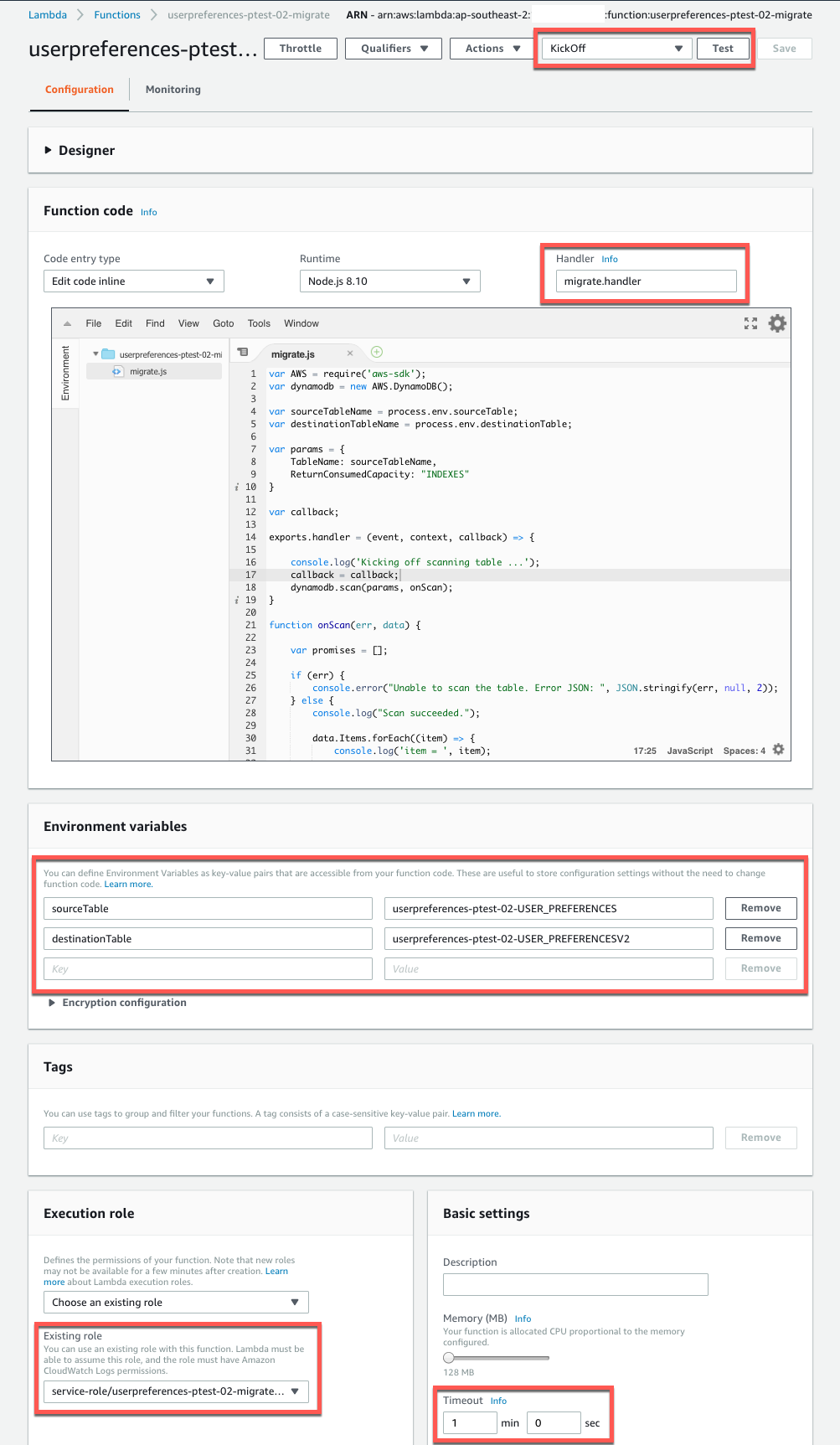
Increase Memory and Runtime Timeout https://docs.aws.amazon.com/lambda/latest/dg/limits.html in case of execution pre-maturely ended without finishing the migration. Furthermore, in case of overcharging DynamoDB due to its limits https://docs.aws.amazon.com/amazondynamodb/latest/developerguide/Limits.html add time delay in Lambda function.
migrate.js
- Add AWS DynamoDB Lambda execution role
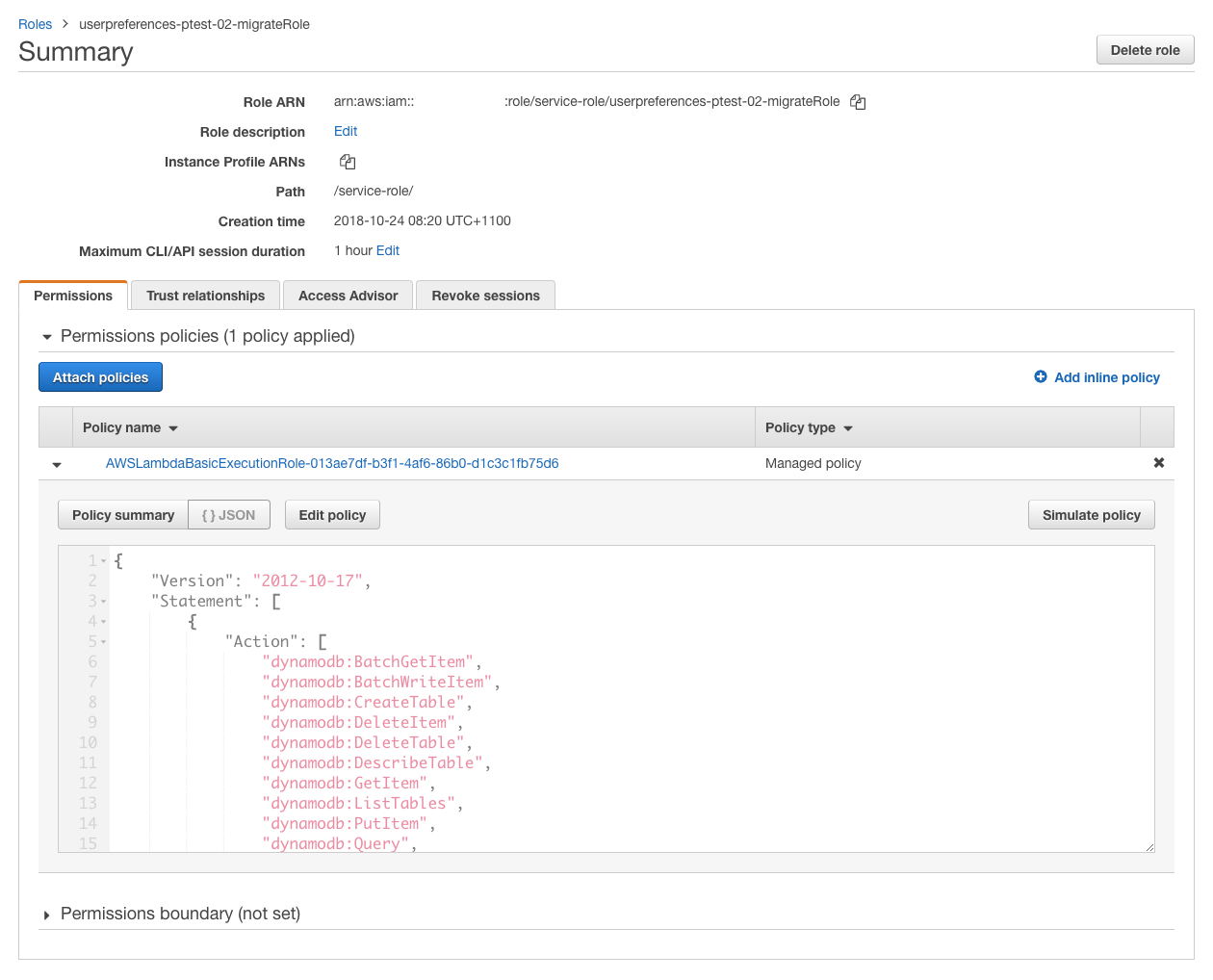
userpreferences-ptest-02-migrateRole
- Create a simple test event that can kick off function
1 | { |
Trigger run the function. Should see the data migrated from existing DynamoDB table into new table.
Log can be found at AWS CloudWatch Log Groups /aws/lambda/userpreferences-ptest-02-migrate
Sync Data
- Enable Stream on the existing DynamoDB table

- Add a new trigger for DynamoDB table

- Create a new Lambda function linked to trigger
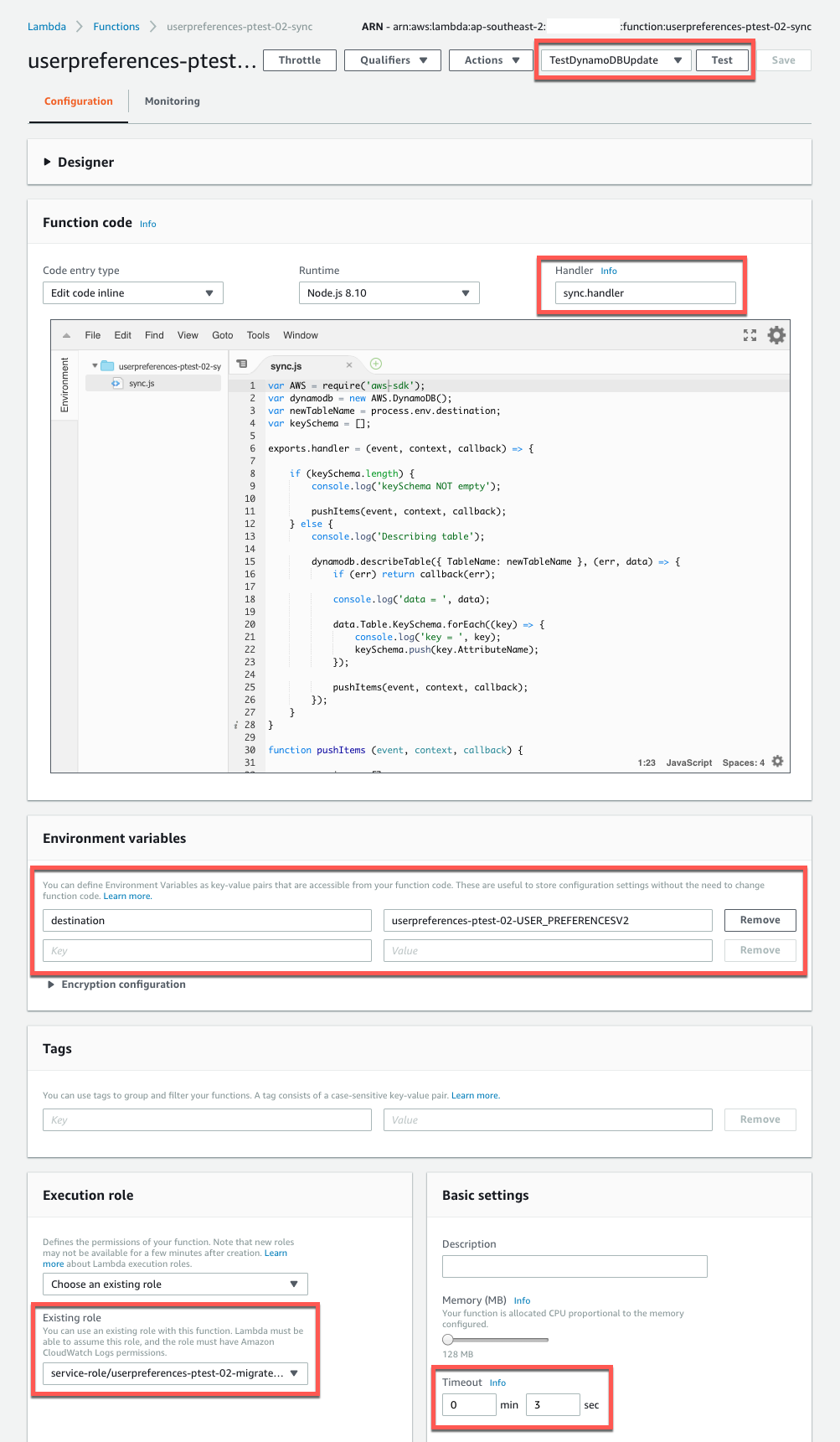
sync.js
- Trigger Testing
AWS Lambda built-in test can test trigger:
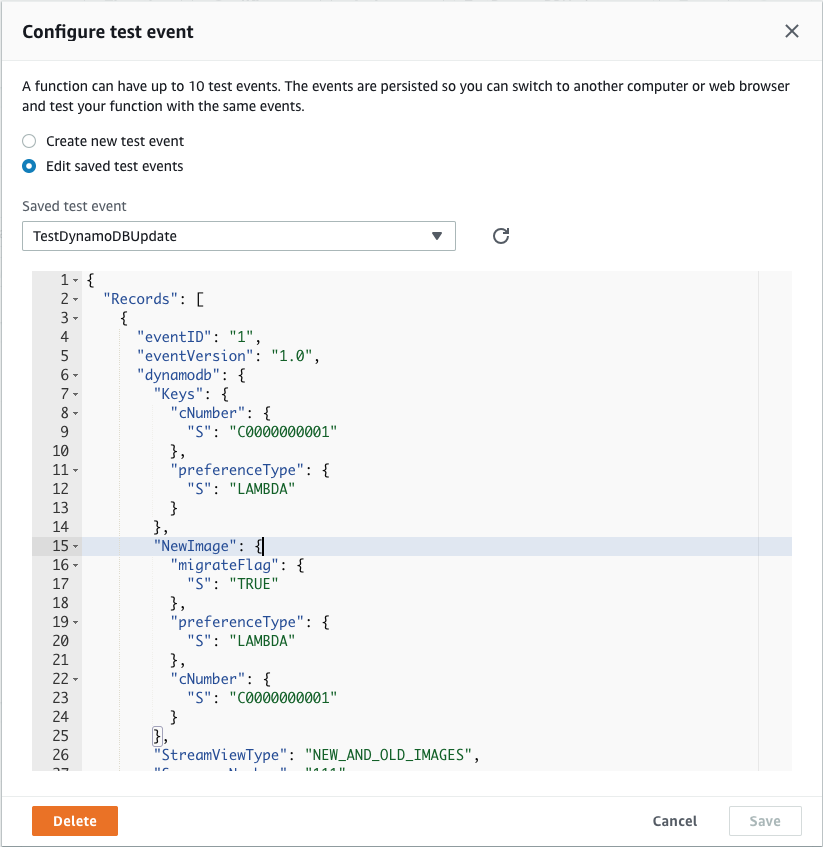
- Logging
Lambda function log can be found on AWS CloudWatch Log Groups /aws/lambda/userpreferences-ptest-02-sync

Counter Data
This Lambda function can count the number of items in DynamoDB table.
counter.js
Async call, callback and Non-blocking, it’s very hard implement so in every applications. In addition, reject promises or async functions, don’t handle them with a catch, NodeJS will raise a warning. In a large complex applications with lots of async, having a single unhandled promise or await function terminate NodeJS, or have to handle them with try and catch in every place (spaghetti code again?) would be very bad.
An example of AWS DynamoDB error:
1 | 2018-11-14T02:20:50.742Z 715f18fb-e7b3-11e8-b5c4-d75f9089dd50 Error thrown: { ProvisionedThroughputExceededException: The level of configured provisioned throughput for the table was exceeded. Consider increasing your provisioning level with the UpdateTable API. |
AWS example doesn’t throw the error in the catch block, it returns error instead, so any errors end up in the catch block. And return promises early and use Promise.all() method.
References
- DynamoDB: Changing table schema, https://www.abhayachauhan.com/2018/01/dynamodb-changing-table-schema/
- Tutorial: Processing New Items in a DynamoDB Table, https://docs.aws.amazon.com/amazondynamodb/latest/developerguide/Streams.Lambda.Tutorial.html
- How to escape async/await hell, https://medium.freecodecamp.org/avoiding-the-async-await-hell-c77a0fb71c4c
- Node.js 8.10 runtime now available in AWS Lambda, https://aws.amazon.com/blogs/compute/node-js-8-10-runtime-now-available-in-aws-lambda/